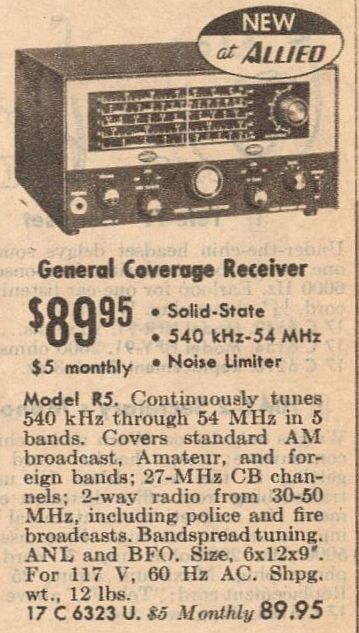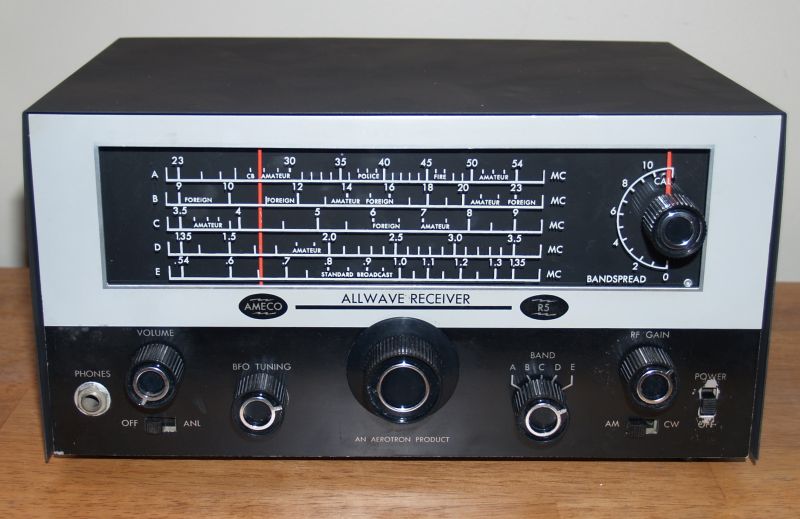
When I purchased this radio at a hamfest (amateur radio convention), it was not in good shape. The top cover was missing, it was extremely dusty, the dial cord and spring were missing, the speaker paper cone was damaged in numerous places, and the ferrite core in the BFO coil was missing. However, the radio did play!
The picture below shows the radio as I received it. Note the dust on the dial, the dust on the the knobs, and the cover is missing.
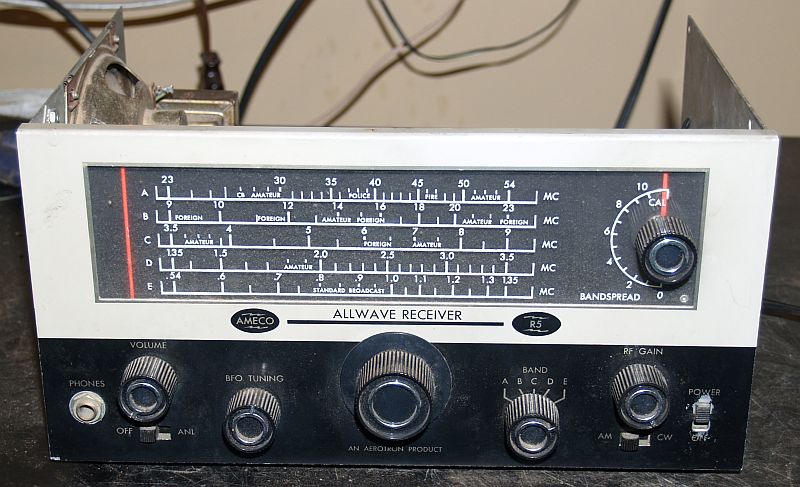
The picture below shows the top of the chassis as I received it. Note how dusty it is and the missing dial cord.
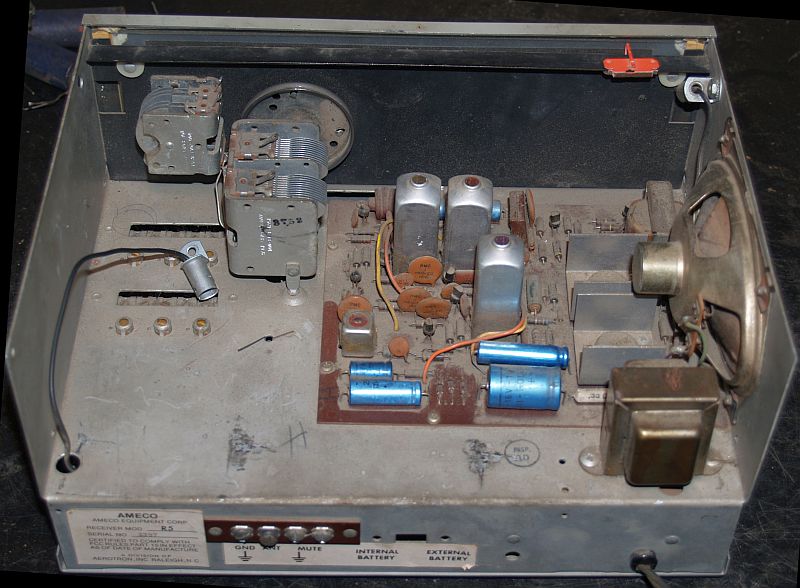
The first issue I tackled was the BFO. Without the ferrite core, the BFO frequency cannot be changed with the front panel knob. The front panel knob is attached to a threaded rod that to which originally was attached a ferrite core. The core moved in and out of the coil when the front panel BFO knob was turned, thus changing the BFO frequency. The BFO will not oscillate without this core present as the inductance is too small for the circuit to oscillate.
I had some ferrite beads on hand, so I mounted one bead (Amidon FB43-301) on a wire and pushed one end of the wire into a slit that was already cut into the threaded rod as shown below.
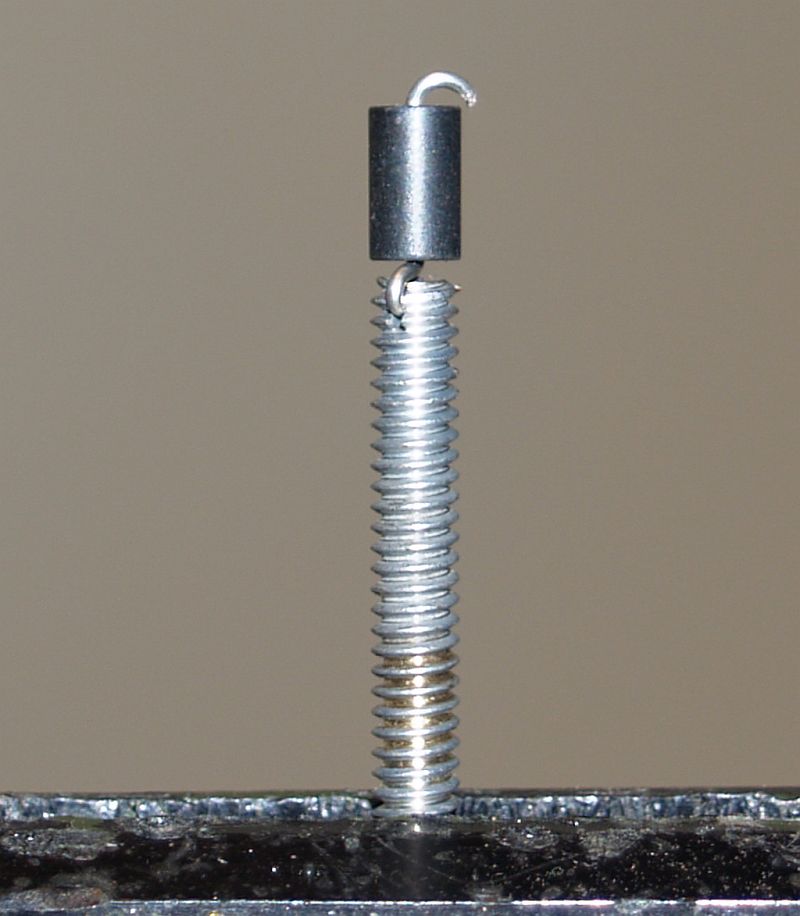
This ferrite bead arrangement seems to work well - you do not have to turn the knob much before the beat note goes out of range, but the tuning is not excessively sensitive.
The next issue to tackle was to fix the speaker. The picture below shows the speaker as I found it.
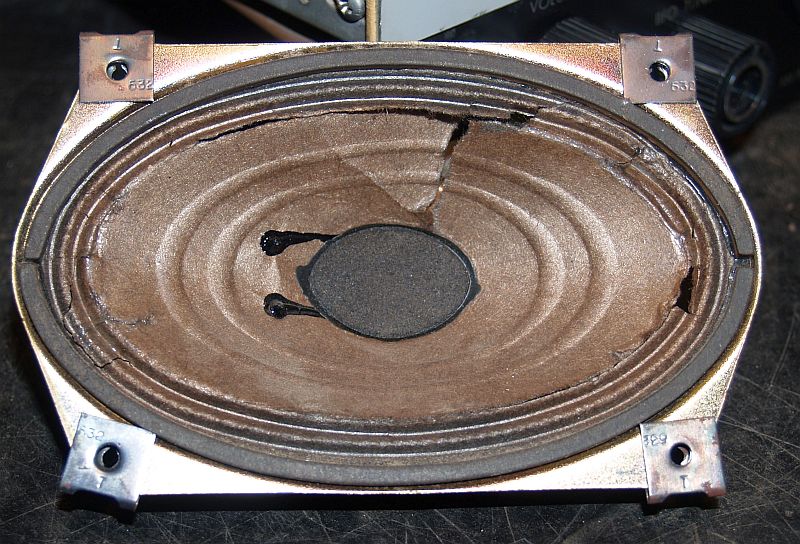
I used black tissue paper to repair the numerous tears in the paper cone. To repair a hole, I cut the tissue paper to the proper size and soaked it in white glue diluted with water. Then I placed the tissue paper over the hole. This tissue paper can be seen as the black strips on the cone in the picture below.
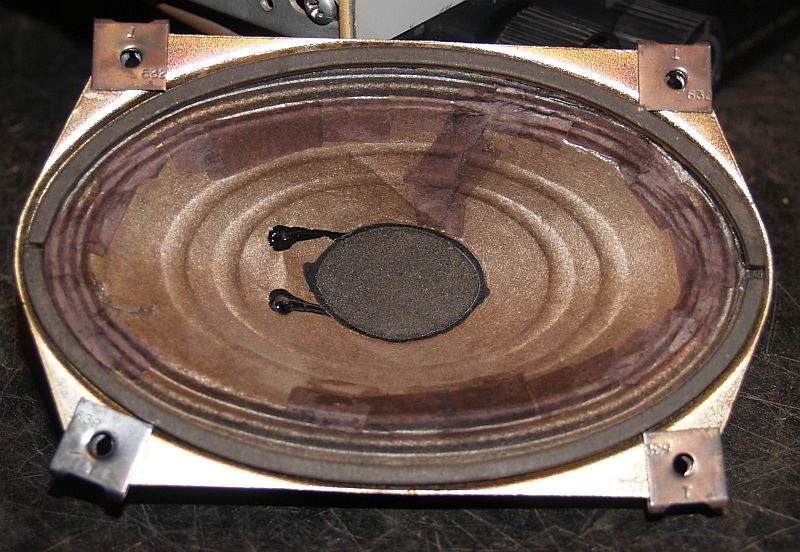
The next issue to tackle was the dial cord. I had no dial stringing diagram nor a dial spring. I found a small #21 spring a my local hardware store that seems to work. It took me a lot of trial-and-error to figure out how to run the dial string to make the knob, dial pointer, and tuning capacitor work in all in the correct directions. Eventually I had to run two dial cords - first, one for the knob, and second, one for the pointer. I cut the spring in half to use for the two dial cords. I suspect the original design used only one cord, but the routing seemed so complex to me that it was easier to comprehend by using two separate runs of the dial cord. You can see the two dial cords in the picture below showing the back and top of the chassis after I cleaned the chassis and installed the new dial cords and springs.
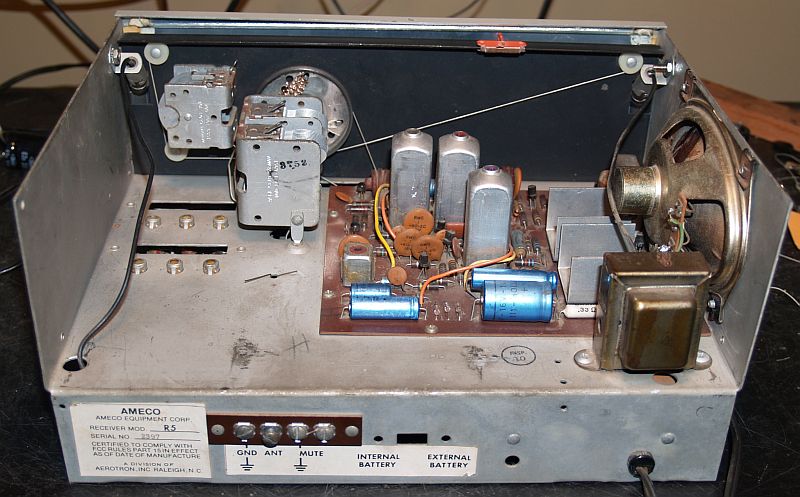
With the mechanical and electrical problems repaired, I removed the front panel and cleaned the dial glass (it is real glass with the lettering painted on) and backplate. I used Windex to clean the glass being careful not to rub the lettering for fear of removing the paint on the glass.
I replaced the dial lamps (both were missing) with 14-V lamps I use for my train layout.
I designed an aluminum cover and had it bent to the desired shape. The louvers on the side with the speaker were punched in using a specially-made mandrel. I painted the cover with Rustoleum high-temperature black paint. Although the cover is not exactly like the original cover, it is similar enough to make the radio look close to the original.
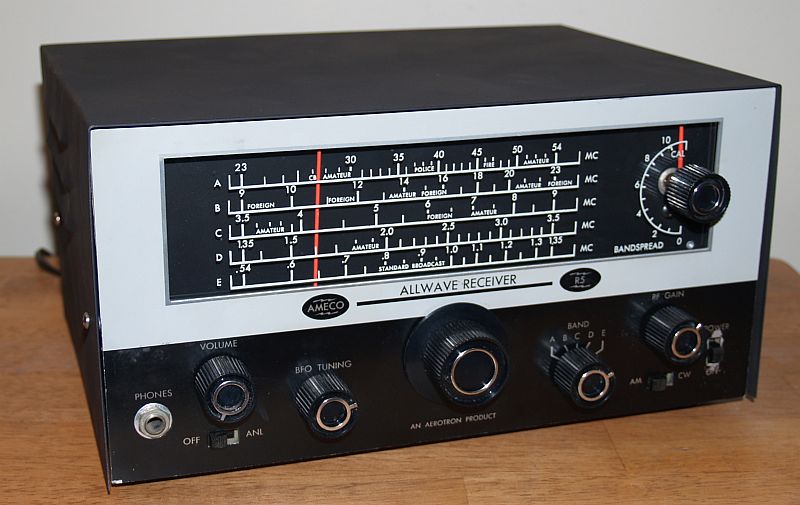
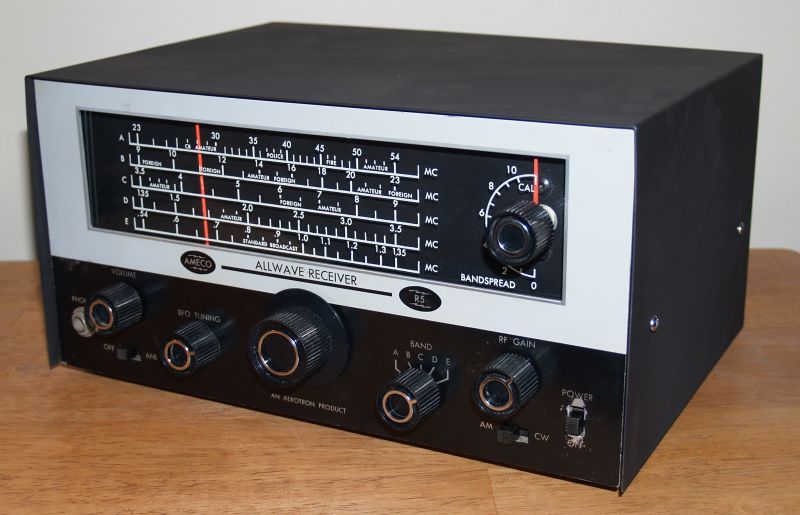
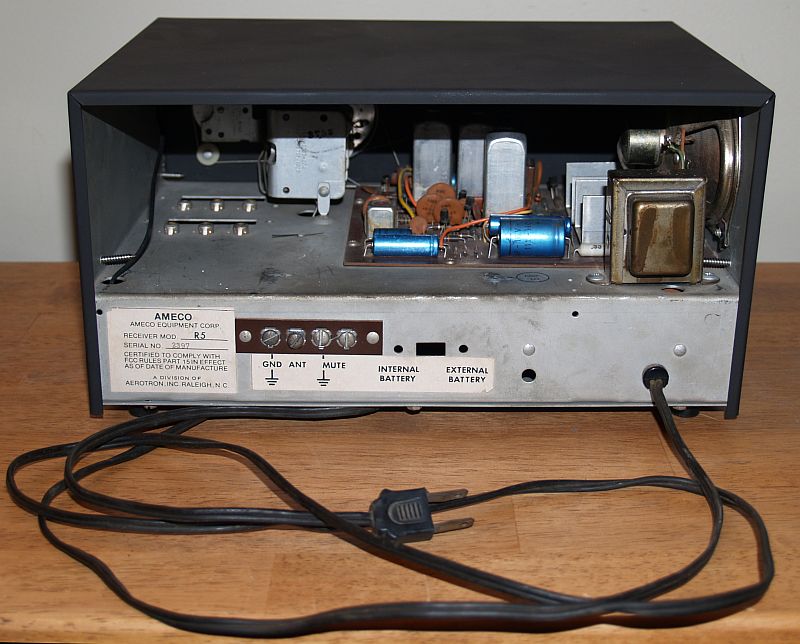
The radio works well now and is quite sensitive. I have to keep the RF gain control about 1/2 way in its travel because the radio overloads easily. And I have to keep the audio gain almost minimum as it has plenty of audio gain, too.
Below is an image from page 205 of the 1969 Allied Radio (Chicago) catalog advertising the Ameco R5 General Coverage Receiver. Note that the radio was new at Allied in 1969 and sold for $89.95.
